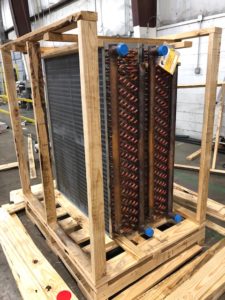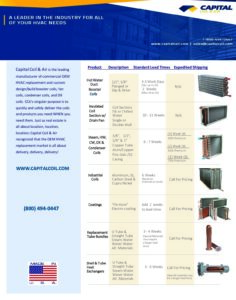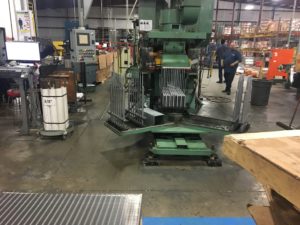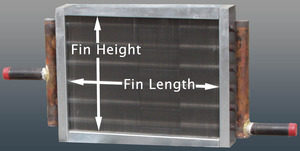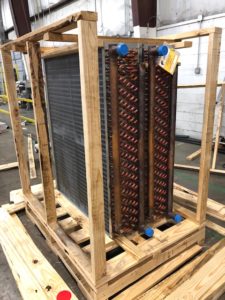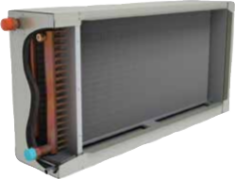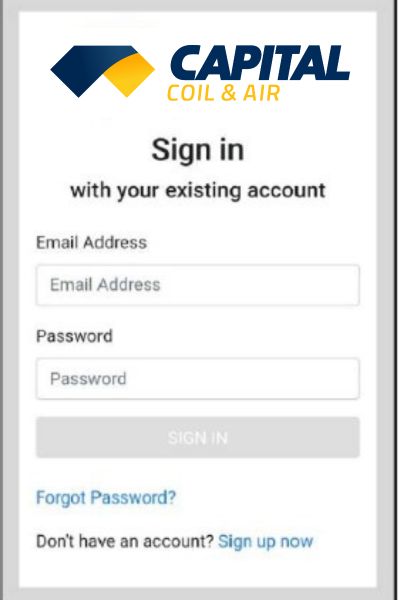Did you recently turn on your DX systems only to find your Condenser Coils are not working? Simple fix right? Unfortunately, no. If you get lucky, you can send us the model number of the unit, and there’s a great chance we’ve already built it. In the case that we do not have that model number on file, you have two options. You can go back to the OEM, wait (5) months for a part and pay through the roof. Or you call Capital Coil, and we’ll walk you through the engineering it takes to replace a condenser coil. 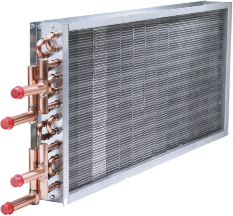
Very rarely do condenser coils ever freeze so the first thing you’re going to want to know is if your coil died of corrosion, old age, or possibly vibration. Old age is obviously preferable because with a few easy dimensions, we’ll have enough to price up your duplicate coil. Condenser coils are usually outside and are easily accessible for measurements and digital pictures. With just the size, the rows, and fins/inch, you can get a price. And digital pictures of the headers and return bends will give us a good idea of the circuiting and sub-cooler circuits.
If the coil has been eaten away by corrosion, it was an improper design to begin with. Most people don’t know that salt in the air will ruin aluminum fins within a year or two. There are two ways to combat this. The first option is to make the switch to copper fins and stainless steel casings. While this will extend the life of your coil considerably, most people are not too happy about the additional cost over aluminum fins. The second option is to use a coating. Coatings are the much more popular choice. They are a fraction of the cost as copper fins and only add (1 – 2) weeks to your lead time.
When your HVAC coils are installed near a moving piece of equipment, vibration can occur and cause leaks. The area where these leaks occur is very important and will clue you in to if the problem is vibration. If they are near the tube sheet and look like they are slicing through the tube, the coils should be isolated from the rest of the system to prevent vibration from causing damage. One way to combat this is by oversizing the tubesheet holes, but many manufacturers will not do this. Condenser coils are usually the most common victims of vibration.
The last concern is with cleaning condenser coils. Since condenser coils see outside air almost exclusively, they need to be cleaned more than other coils. The reason for this is most condenser coils have fin spacing of 12-20 fins/inch. With fins that tight together, the coil can and will act like a filter. And when the coil is clogged up, the performance suffers greatly. Recently, we’ve been getting more and more calls about using a heavier fin thickness. This is to help with high pressure cleaning and corrosive cleaning agents.
When dealing with an HVAC coil manufacturer, partner up with one who will walk you through the engineering and explain it along the way. Capital Coil & Air has well over a decade of experience and has seen every issue to make sure your everything from the quote to the installation go smoothly! Give us a try on your next project!
RELATED POSTS
Top 5 Reasons HVAC Coils Prematurely Fail
You should never have to worry about performance on replacement coils. Well… almost never!
